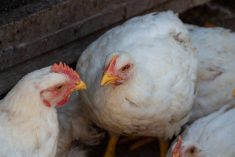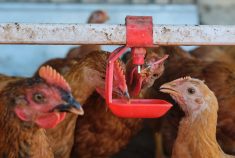Western Canadian feeder cattle prices were $1-$3 per hundredweight (cwt) higher last week as the yearling run started the season on a firm tone. Satellite sales experienced larger volumes over the past seven days and regular auction markets are planning larger sales over the next week.
Feedlot operators are stepping forward more aggressively in the short term as cattle on feed numbers are at seasonal lows. Strength in the deferred live cattle futures is also enhancing buying enthusiasm for shortkeep feeder cattle. Barley prices are under pressure as harvest progresses across Western Canada under favourable weather conditions.
Read Also

U.S. grains: Corn and wheat futures firm on brisk exports, softer dollar
U.S. corn and wheat futures firmed on Thursday, supported by brisk export sales and a softer dollar, which tends to make U.S. grains more competitive globally, analysts said. Soybean futures clung to modest gains.
Alberta packers were buying fed cattle in the range of $110-$111/cwt last week, down $2/cwt on average from seven days earlier. Packers have covered their Labour Day purchases and beef demand goes through a seasonal low in September. This may temper the upside in the feeder market over the next month.
Lighter-weight feeder cattle were exceptionally strong with mixed groups of 500- to 600-pound steers selling in the range of $175-$200/cwt in southern Alberta. Replacement cattle in the 700- to 800 pound range sold from $135 to $145/cwt delivered south of Calgary.
U.S. corn production was estimated at 10.48 billion bushels by the ProFarmer tour that wrapped up this past Friday. This is likely factored into the market and the main corn harvest will come onstream over the next two weeks. The feedgrain complex may come under pressure during this time which will enhance North American feeder cattle prices. However, I’m still bullish on barley and corn prices over the winter period, and the world cannot afford a crop problem in South America.
Retail and restaurant demand starts to improve in November making seasonal highs in December. Analysts are still expecting a year-over-year decline in fourth-quarter beef production and consumer spending also improves from October through December. April 2013 live cattle futures continue to trade near contract highs of $136, so the feeder market has some positive influences over the next month.














